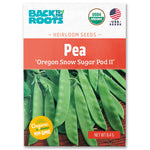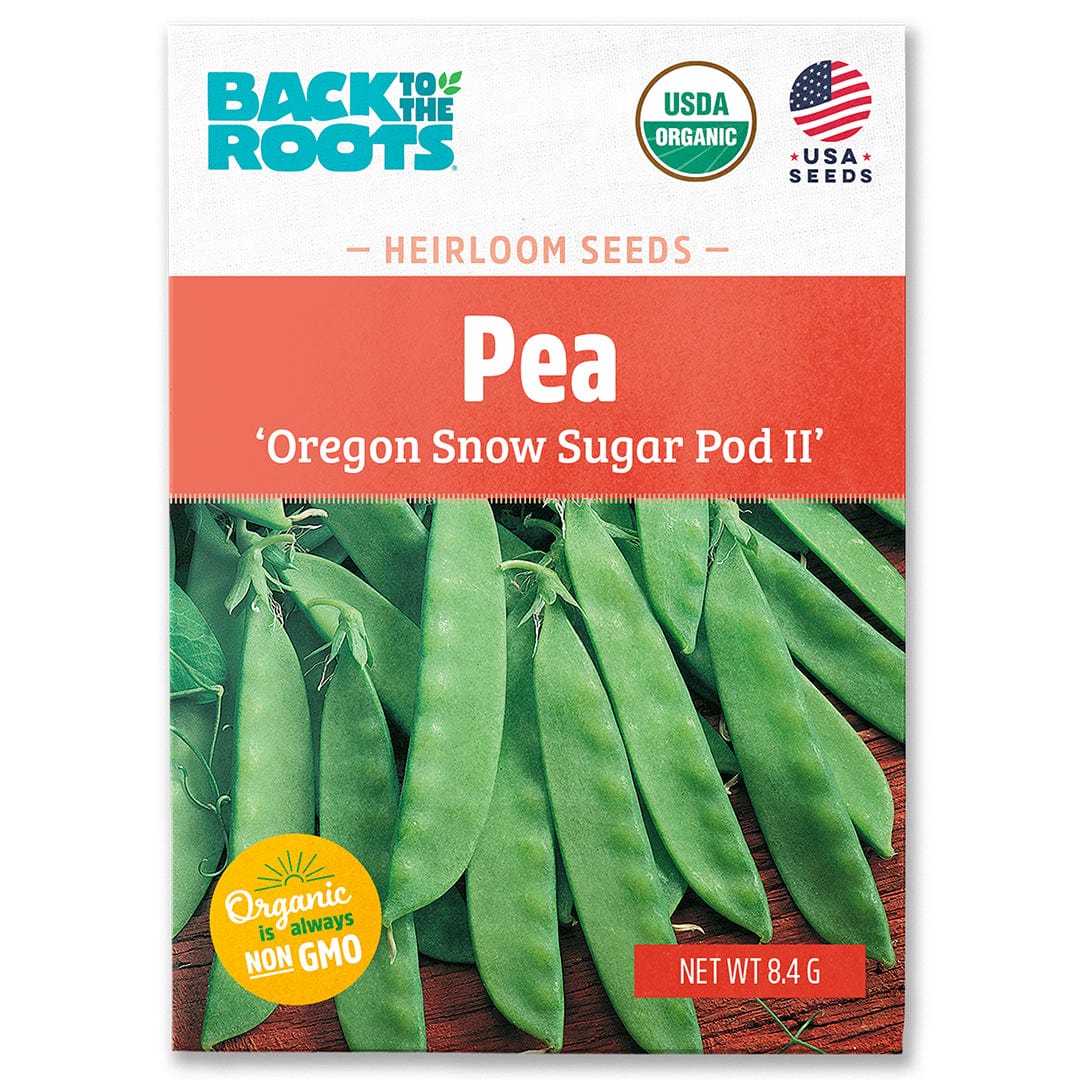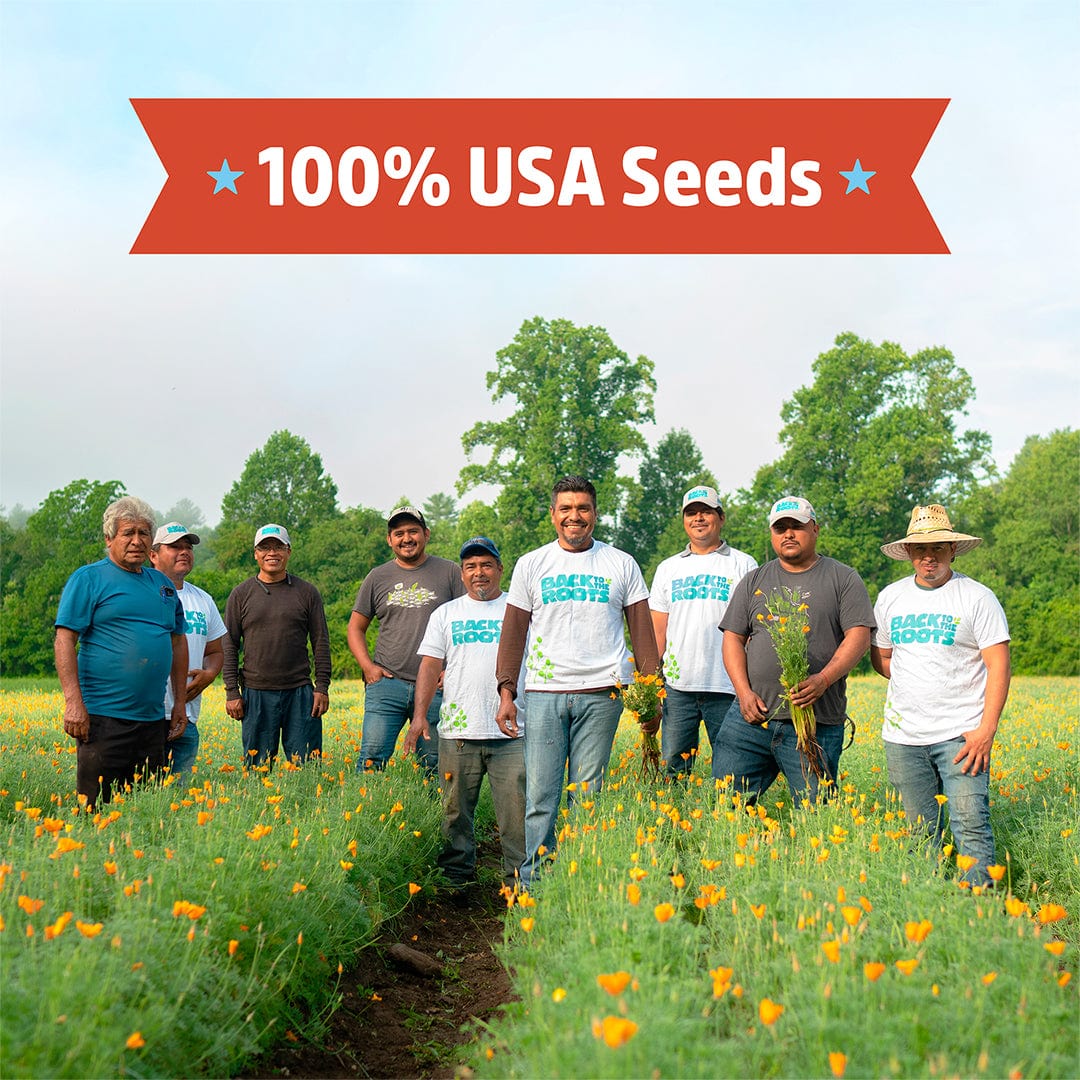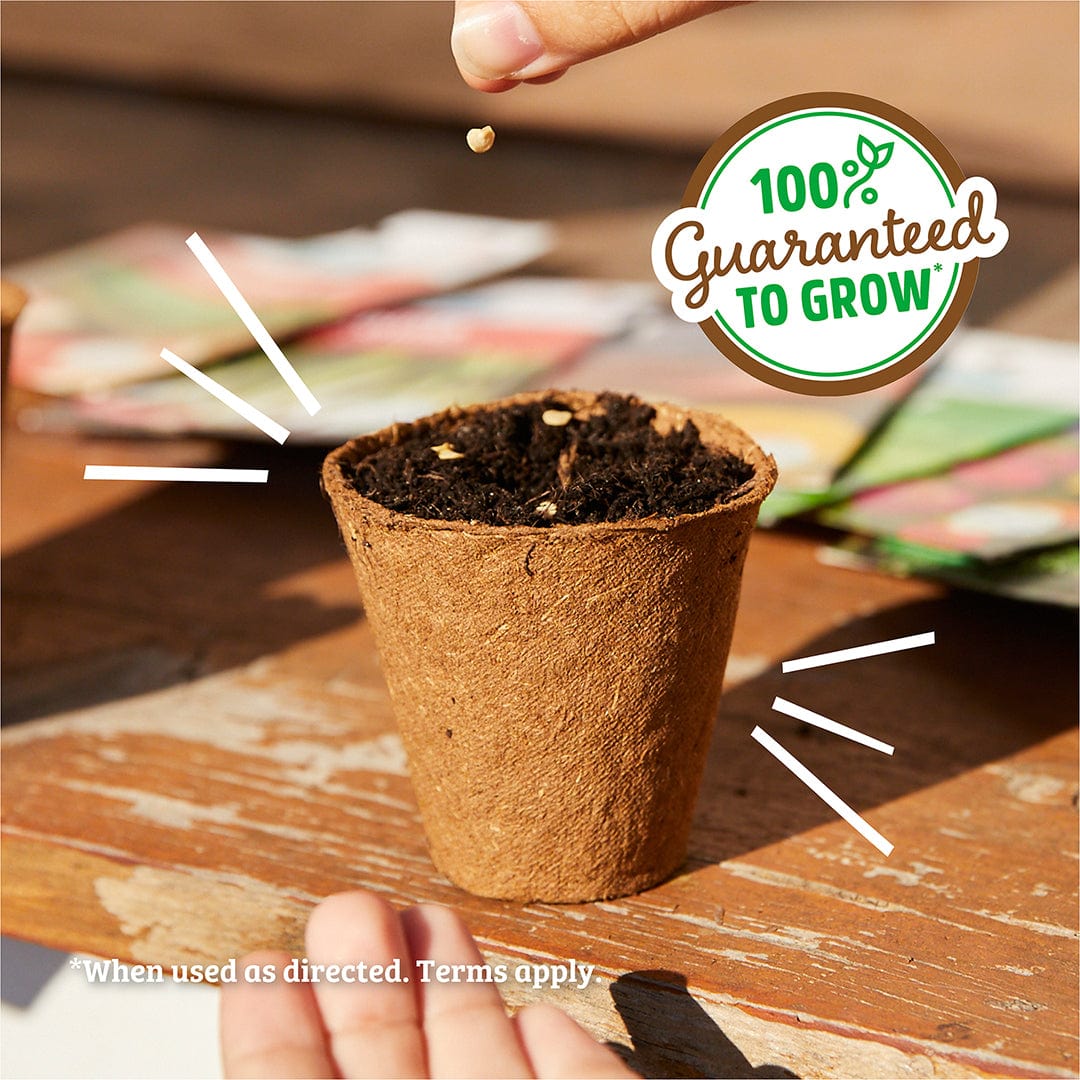
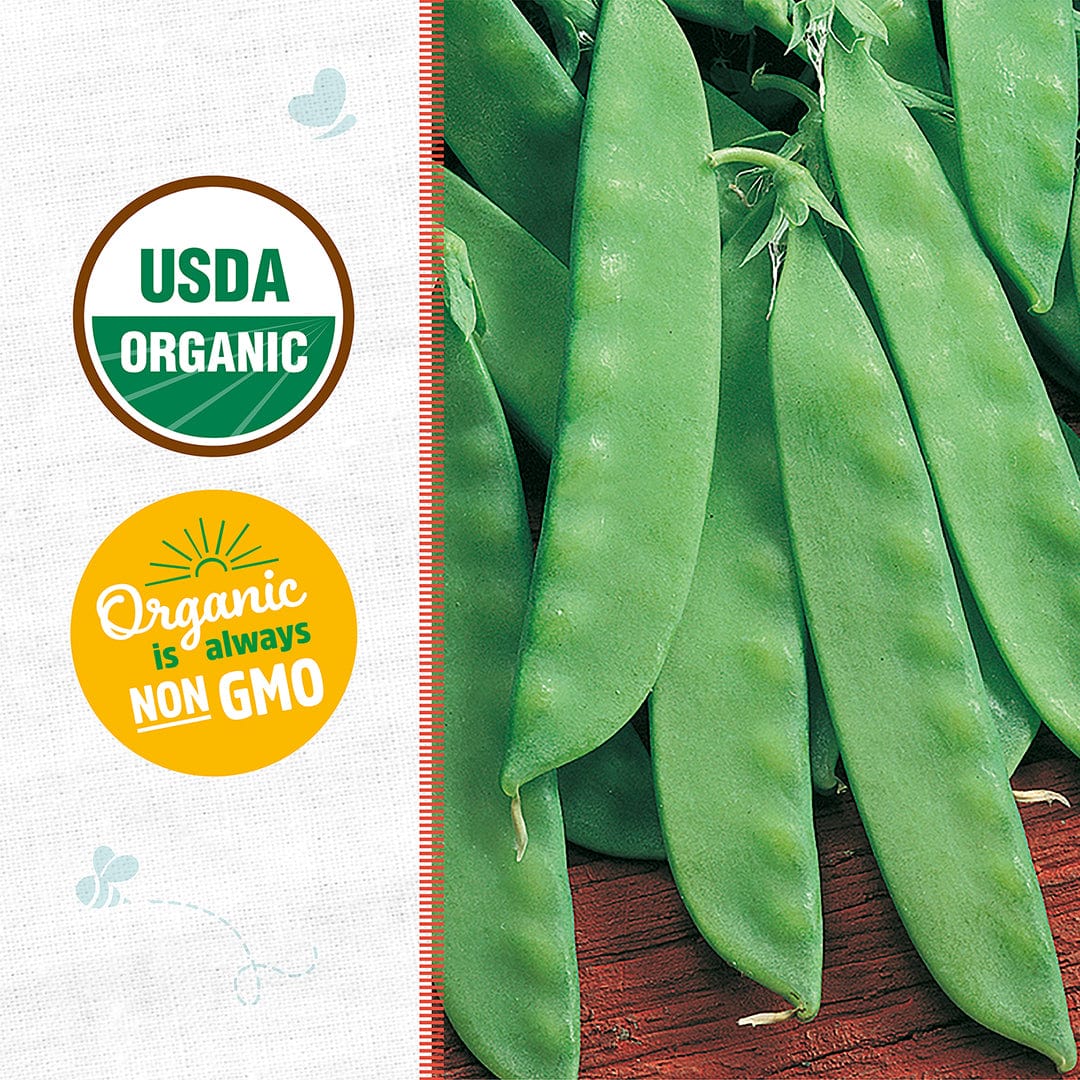

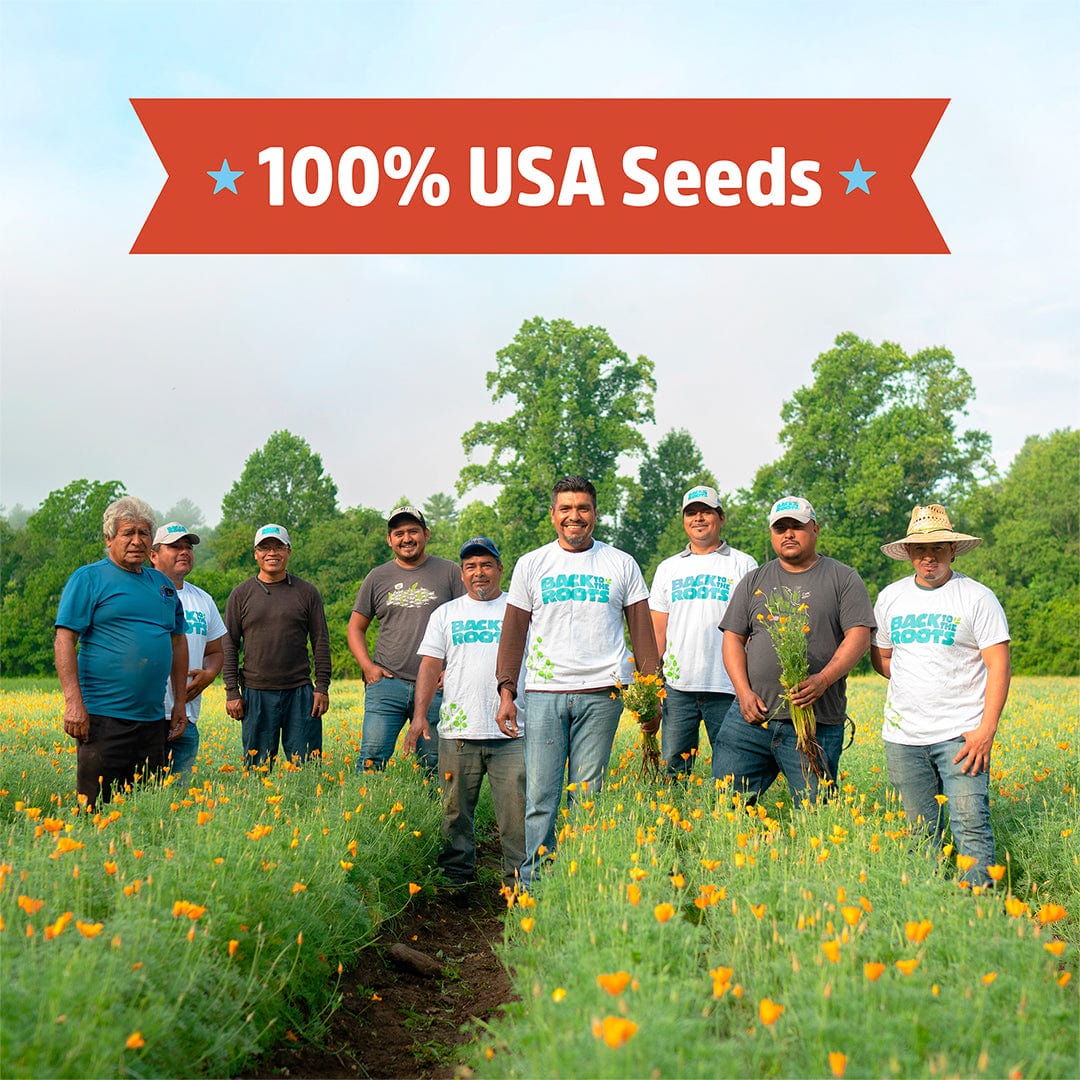
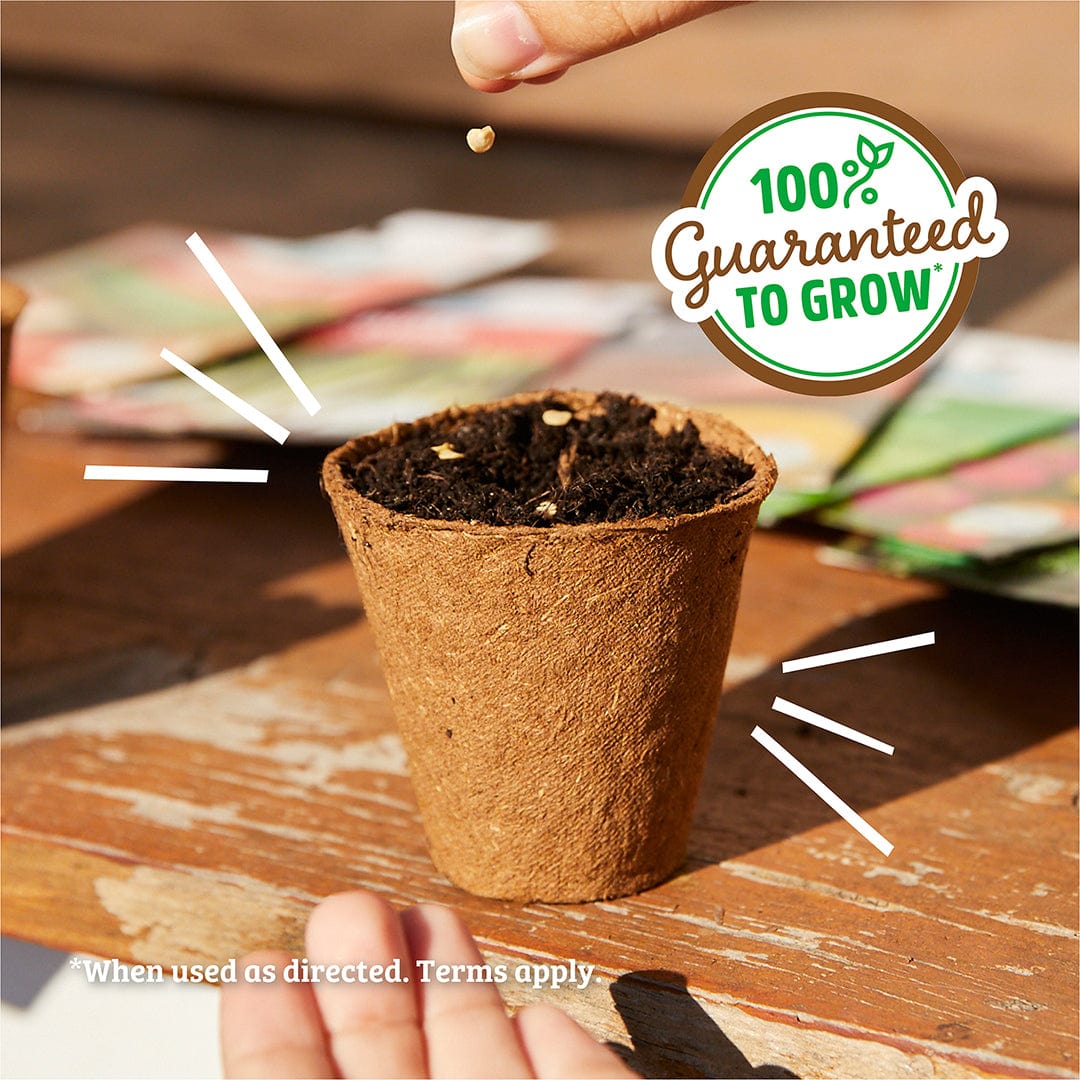
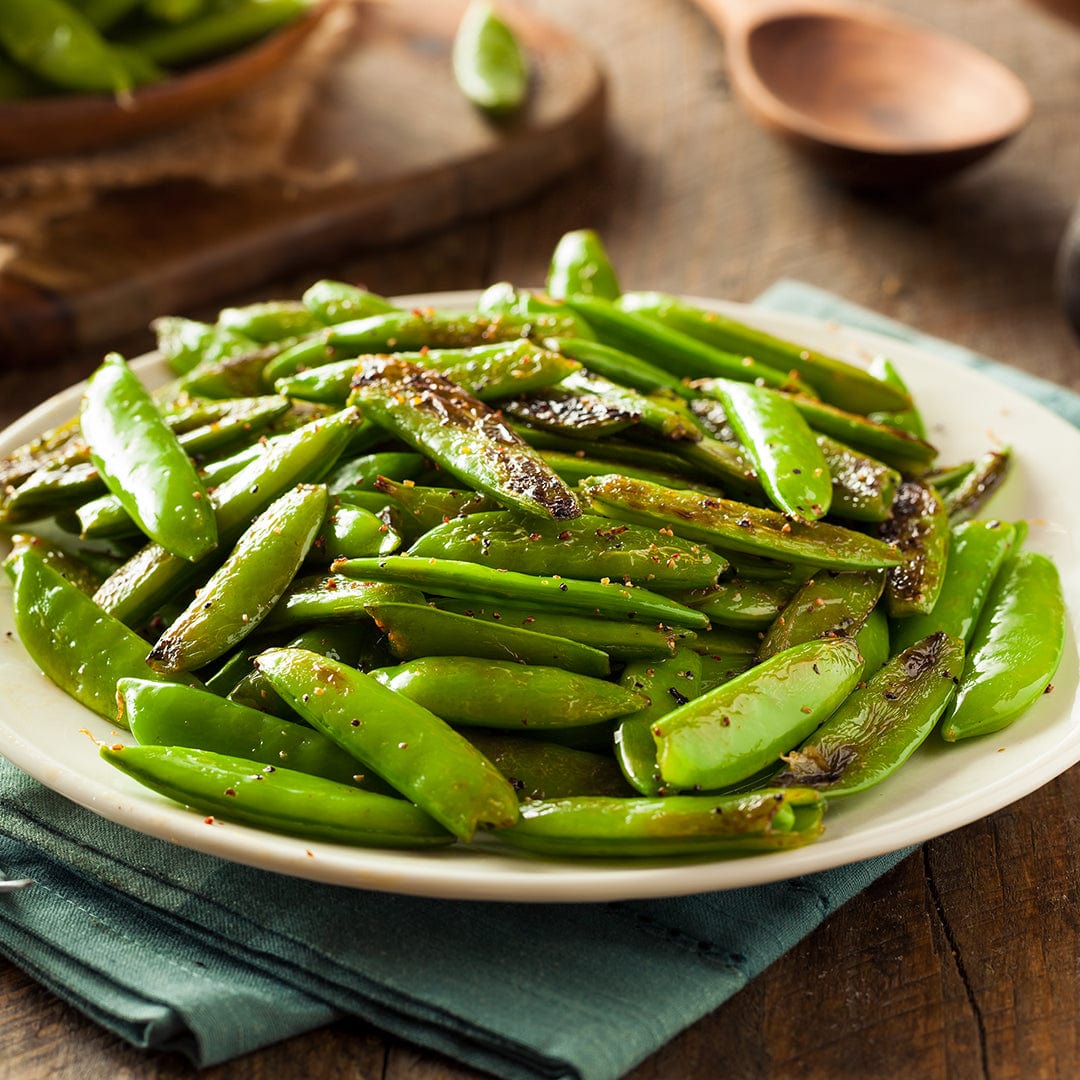
Organic Pea Seeds — 'Oregon Snow Sugar Pod II'
Overview
Planting peas is a springtime ritual that rewards the gardener with bountiful harvests of sweet tasting peas far more flavorful than store bought. Peas are rich in protein, vitamins A and C, folate and iron.
There are three kinds of peas commonly seen in home gardens:
English peas, aka shelling peas, produce inedible pods from which large, edible peas are harvested.
Snow peas produce edible flat pods with small peas inside.
Snap peas produce tender, edible pods with full-size peas.
Conditions
For soil, use a fertile well-draining potting mix that’s tailored for vegetables. Peas are a cool weather crop, so plant early in the spring as soon as the soil can be worked. Most pea varieties require support structures (trellises, poles, or fences) to grow best. For best quality crop, provide full sun (6+ hours of direct sunlight per day).
Planting
Plant peas directly in your garden once the soil can be worked. Use our grow calendar tool to find specific planting dates for your region! Seeds germinate in 7-14 days.
Plant peas ½-1” deep, spaced 1-1 ½” apart in rows 4-6 feet apart. Put trellis or other support structure in place shortly after planting. Thinning is not required. As peas grow, make sure plants are latching onto the support structure.
Care
If peas have not been grown in your garden before, it may be necessary to inoculate pea seeds prior to planting. An inoculant will help your peas form nitrogen-producing nodules on plant roots, allowing peas to fix nitrogen from the air into the soil for nutrient use. This symbiotic relationship with beneficial bacteria enriches the soil, results in larger plants, and increases yield.
Pests and Disease
A common disease is pea root rot (Fusarium sp. or Aphanomyces euteiches) which causes browning and drying of the foliage from the ground up. The best controls against rot are well-drained soil and crop rotations out of legumes for at least three years.
Powdery mildew causes white, powdery mold on the leaves, stems, and pods in hot and humid weather. To prevent disease, avoid overhead irrigation and increase plant spacing to maximize airflow.
Harvest
Peas mature quickly, so check daily once flowers bloom. Keep your peas well picked to encourage more pods to develop. Pick peas in the morning after the dew has dried. They are crispiest then. Use clippers to cut the pods from the vine, or remove with two hands (take care not to damage vines). Pea pods that have hardened or turned a dull color are over mature.
If you missed your peas’ peak period, you can still pick, dry, and shell them for use in soups.
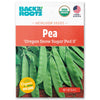
Organic Pea Seeds — 'Oregon Snow Sugar Pod II'
